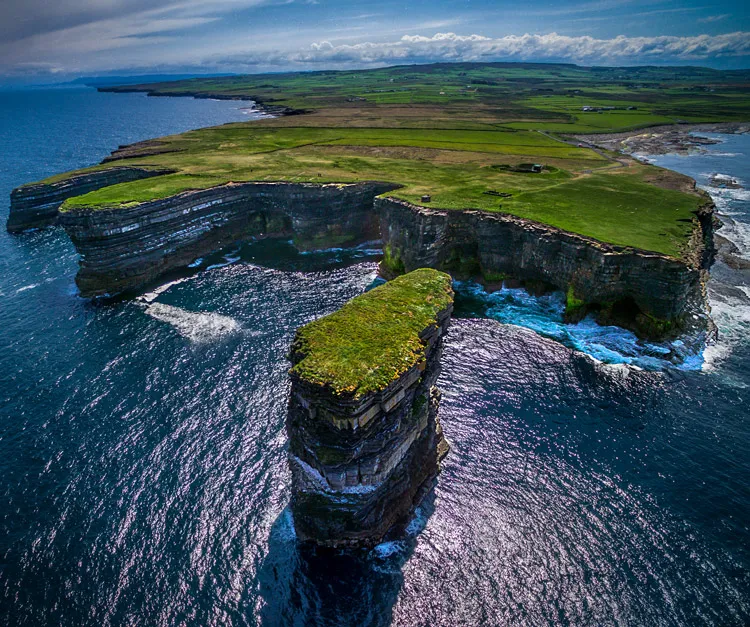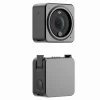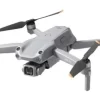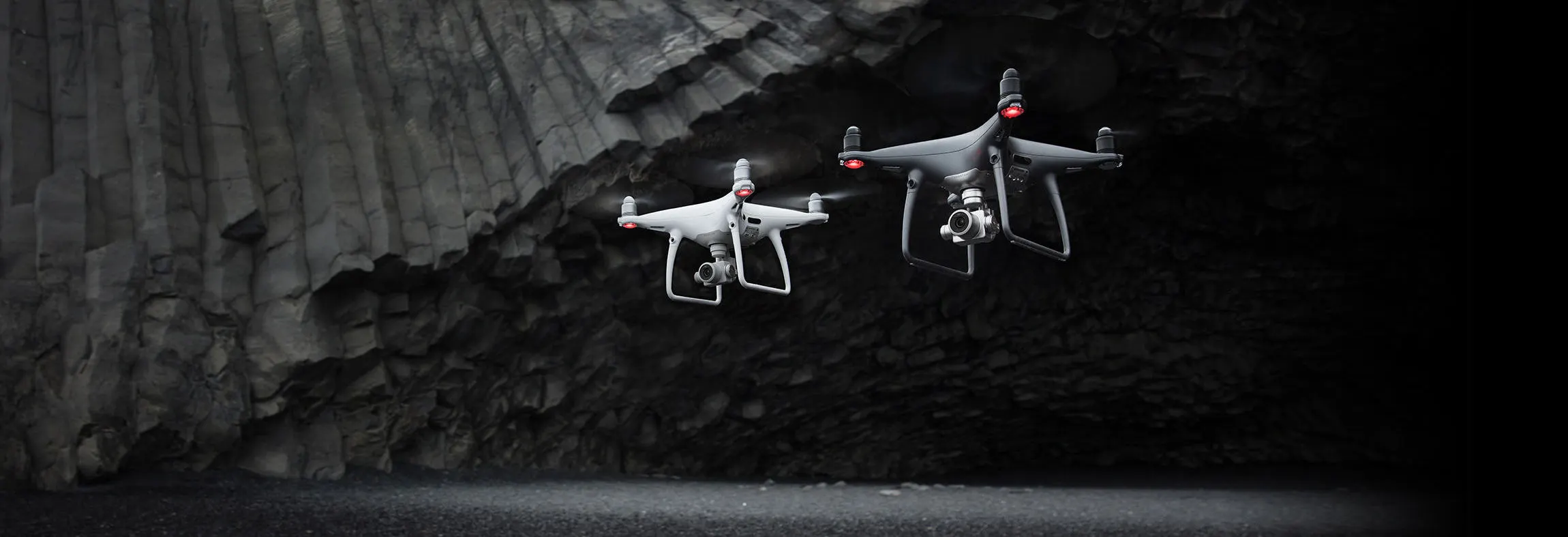
Has DJI set the standard for flagship drones? It's easy to get lost in the great ocean of consumer drones. Even just looking at industry leaders' DJI options, there are enough choices to set your head spinning faster than a quadcopter blade.
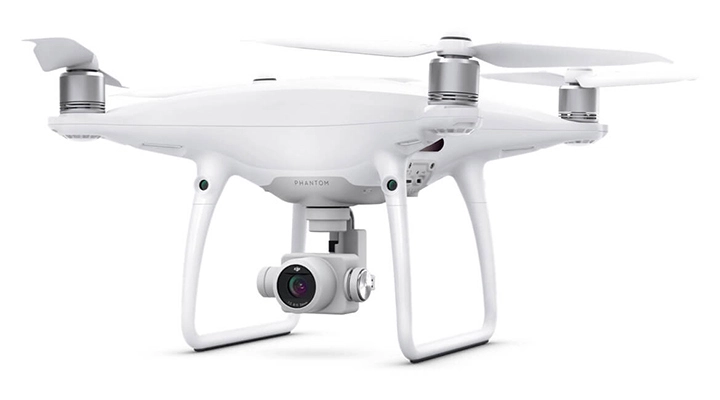
Specifications
| Dimensions | 16 by 14 by 9 inches |
| Weight | 2943 g |
| Rotors | 4 |
| Obstacle Detection | Yes |
| Integrated Camera | Yes |
| Video Resolution | 4K HD |
| Megapixels | 20 PM |
| Media Format | MP4/MOV (AVC/H.264; HEVC/H.265) |
| Remote | Yes (Not Included) |
The Phantom 4 Pro is the most recent model in the Phantom series, which is the range that lifted DJI into the realm of “drone world leaders.”
The Phantom Pro is a significant upgrade over the regular Phantom 4, sporting a variety of professional features and improved flight technologies that include front, rear, and downward sensors, as well as infrared sensors on the sides to provide obstacle detection in five directions.
Camera is also a strong point of DJI‘s new drone. Thanks to its 20MP 1-inch sensor and ability to shoot video up to 4K60FPS, this is most definitely a pro-level drone. Because of those features, it’s not the cheapest or smallest model in DJI’s fleet, but all its impressive specs, combined with its power and speed, make it a fantastic option for pilots who want to test something more advanced.
The Phantom Pro boasts a range of intelligent flight modes, three of them to be precise: Profile, Spotlight, and Circle. Plus, draw mode allows you to draw a route for the aiìrcraft to follow on a smart device running the DJI Go 4 app. TapFly is also an interesting mode that enables your quadcopter to fly backward to capture aerial selfies.
After this short intro, let’s dive deeper into the Phantom 4 Pro‘s feature.
Table of Content
Design and Controller
The Phantom Pro is identical to its predecessor, the Phantom 4. It’s a white quadcopter with sleek lines and a glossy finish. It measures 17,7x29x29cm and weighs a whopping 1375g, so you’ll need to register with the FAA before conquering the skies with this drone.
Like we saw with the regular Phantom 4, the Pro has a similar packaging that doubles as a carrying case. It’s a compact and practical solution if you frequently work with it. The carrying case isn’t the most comfortable as it only has one small handle for carrying, so we recommend investing in a backpack, especially if you’re going to travel or hike with the quadcopter.
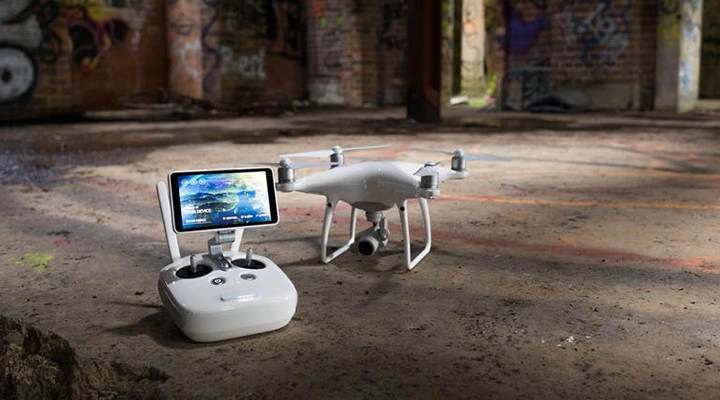
The remote that ships with the Pro are essentially the one that comes with the standard Phantom 4. It includes a clip to hold a smartphone or tablet, dual control sticks, camera control dials, customizable rear buttons, and buttons to pause automated flight and bring the drone back to its launch point.
The controller fits in with the whole elegant design and all-white finish of the drone. It fits perfectly into your hand, and all the controls are easy to reach while holding it. It has a range of around 7,5km under optimum conditions, but optimum conditions stated by the manufacturer are almost near impossible. Expect just under 7km, making it the best drone in its class.
There are also buttons to take still images and start/stop video recording. The remote has two dials on the top, one for the gimbal pitch and the other to control the camera setting.
Flight and Safety
The Phantom 4 was the first DJI drone with forward-facing obstacle avoidance sensors, and those same sensors carried over to the Pro version. The Phantom Pro also has downward-facing sensors, which work with the existing Vision Positioning System to stabilize low-altitude flight better. The quadcopter also supports the Terrain Follow flight mode, which hugs the ground and maintains a safe altitude, even when flying on hills.
There are also infrared sensors on the left and right sides of the drone. These aren’t as capable as the front and rear obstacle sensors, so don’t think you can recklessly fly the Phantom Pro wherever you want and never risk crashing. Flying it sideways into a wall is a real danger in most situations.
If you want to be completely safe, you have to switch modes and fly in Beginner mode. Beginner mode is one of the slowest and takes advantage of advanced obstacle recognition on all four sides. Forward and rear obstacle avoidance works flawlessly even if you fly at top speed into an object, the Pro will stop in its tracks instantly.
The operating range is pretty strong. In rural environments, the drone can easily fly up to 1200m away from you before getting any sort of choppiness in the live video feed. In an area filled with more obstacles, the range for the signal drops to about 800m.
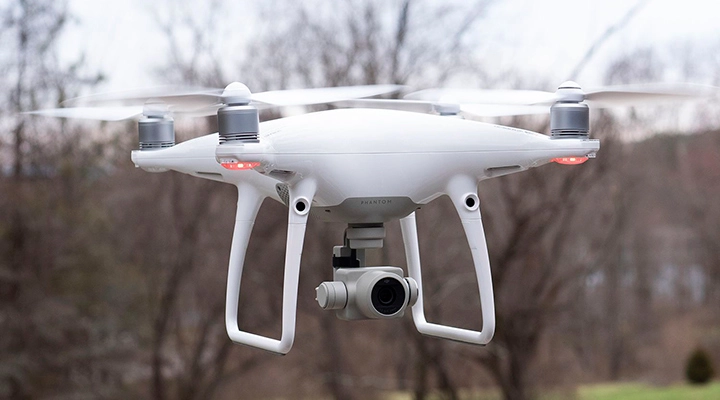
Like with other DJI drones, the Pro also has a sport mode that increases its maximum speed to 72kph but disables all obstacle detection systems.
The Phantom 4 Pro is a little sports car when it comes to flying. It’s powerful enough to get out of control if you’re not careful. The drone does accelerate quickly but is very smooth about it. The responsiveness of the Pro is fun while flying, but it can become jerky for video recording. So, overall the Phantom Pro is a responsive, fast, and reliable drone. You’re good to go as long as you stay within line of sight.
The drone also has automated and semi-automated flight modes, controlled via the app, but you should be comfortable with manual control before using them. Even with all sensors activated, you never know when you’ll need to take manual drone control to avoid accidents.
Some interesting and useful modes are Point of Interest, Waypoint, Follow Me, Course Lock, and Home Lock. Point of Interest makes the drone fly in perfect circles, keeping the camera pointed at the center the entire time. Waypoint reproduces a flight between several points in space repeatedly, and Follow tracks the position of the remote control and flies the drone to keep up with it as it moves.
Lastly, Course Lock and Home Lock change how the Phantom Pro responds to controls. Course Lock keeps the quadcopter flying in a specific direction based on the orientation of the aircraft’s nose when activated, which lets you rotate the body and camera while flying in a particular direction. When Home Lock is turned on, pulling the right stick toward you will always bring the drone back closer, and pushing it up will always fly away from you, regardless of the position of the nose.
Active Track is similar to what we have in other DJI drones, as it allows you to draw a box around a subject, which the drone will, in turn, recognize and follow as it moves. It works very well unless the subject is too small and doesn’t blend in with the background.
TapFly is an exciting mode that lets you move the Phantom to a point in space by tapping it in the Live View feed.
Overall the flight experience with the Phantom Pro is fantastic and allows both pros and newcomers to enjoy this flying machine to its fullest.
Gimbal
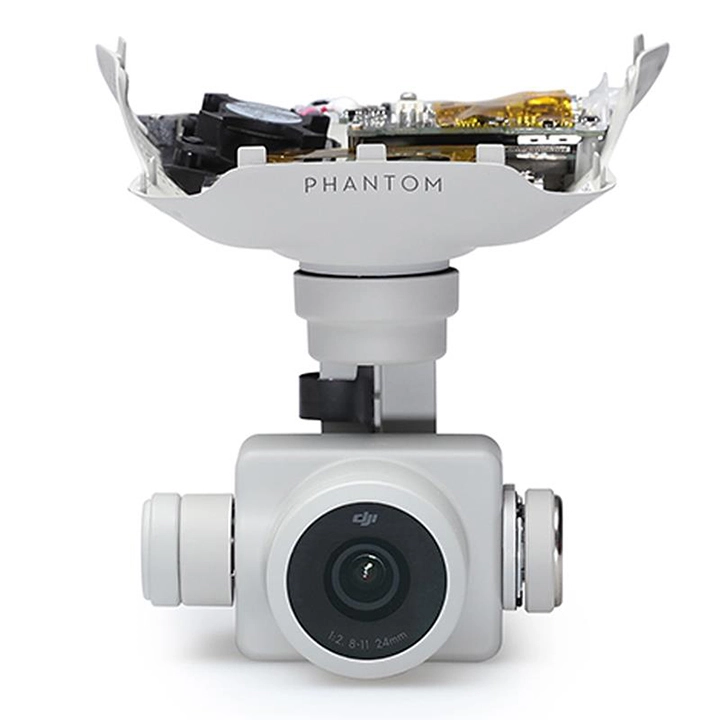
The 3-axis gimbal provides exceptional stability when it comes to recording footage even with the Sport mode on, which is impressive. The gimbal uses the latest stabilization technology DJI has to offer and along with its custom dampers, which give you distortion-free smooth images.
Software
The Pro comes with fantastic DJI Go 4 app-integrated software. What makes it so good is that it has a virtual flight simulator for beginner pilots. So if the Phantom Pro is one of your first drones, we advise you to spend some time on the simulator before flying it, and it’s actually a great simulator to understand the basics of the quadcopter.
Battery
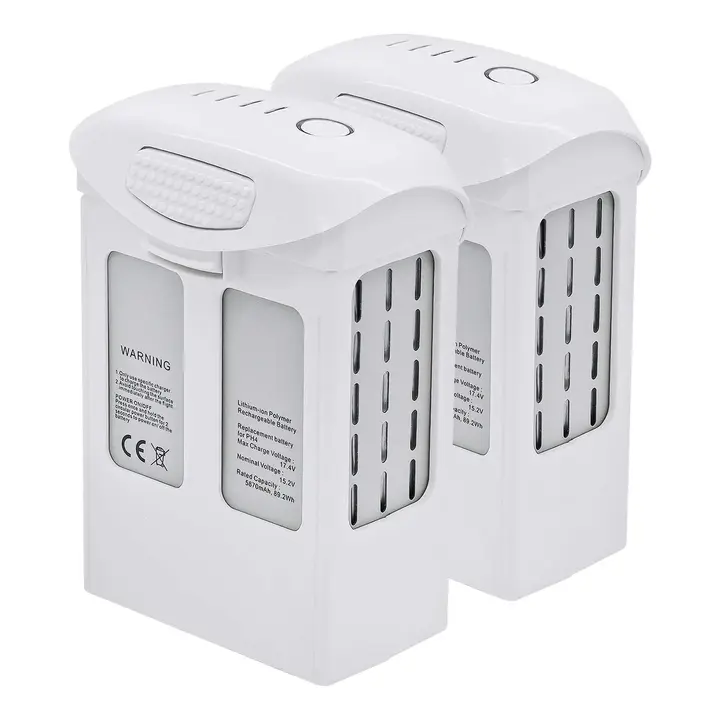
Battery life is solid too. DJI rates the Phantom 4 Pro for 30 minutes of flight time with a full battery, which is a number calculated under ideal conditions. The more realistic number is around 25 minutes of actual time in the air. It’s a modest improvement over its predecessor, but it’s still pretty good when factoring in the weight and power this quadcopter packs.
However, tests show that over the course of 10 different flights that spanned from 100 percent battery charge to emergency low-battery automatic landing, the Pro 4 averaged a flight time of almost 27 minutes. So the endurance of the Phantom 3 is excellent.
As for battery recharge times, we found that a nearly-empty battery (around 10 percent remaining) takes about 1.5 hours to recharge to 100 percent. That said, you’ll most of the time be compelled to land before you reach critically low levels of battery, so most of your recharges will take about an hour and 15 minutes or less.
Camera
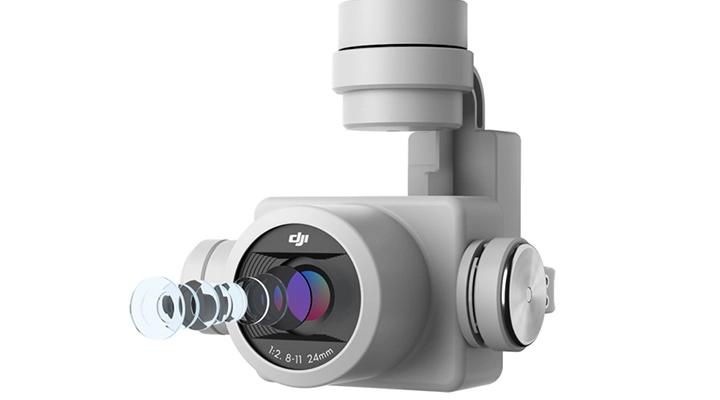
Photos
Everything we covered has impressive features, but the real reason to opt for the Phantom 4 Pro is its mind-blowing camera. The Pro uses an all-new video camera with a 1-inch CMOS image sensor, with 20MP Raw and JPG image capture.
Surface area is crucial for the camera, and the Pro‘s 1-inch sensor is about four times the size of the more typical ½.3-inch sensors used in most DJI drones. In addition to the larger sensor, the camera adds aperture control and a mechanical shutter. Its field of view is 24mm, and the aperture goes up to f/11.
The mechanical shutter is there to eliminate the rolling shutter effect, which means that if you get a propeller in a shot, it won’t show the jello-like effect that you get with many cameras that use electronic shutters for video capture.
Video
Video recording options are vast. If you want to shoot at the highest resolution, 4K DCI, typically used for cinema productions due to its 2:1 aspect ratio, video can be shot at 24,25 or 30FPS. When shooting at UHD, 4K in standard 16:9 format, you can choose from 24, 25, 30, or 60FPS. All 4K footage is compressed at a 100Mbps bit rate. You can also shoot videos at a lower resolution, as you can take videos at 2.7k at framerates up to 30, 50, or 60FPS.
The larger sensor, coupled with the higher bit rate, makes Phantom Pro’s videos crisper and shows more detail than you get with its predecessors, Phantom 4 and Phantom 3. Likewise, still, images show more detail, not just of the increased resolution but also for the larger sensor.
Pros and Cons
Pros
- Pro experience
- High-quality camera
- Safe
Cons
- Expensive
- Not for beginners
- Not a handy drone
You should buy the DJI Phantom 4 Pro if…
- You’re looking for more pro experience: If you got bored with the average drone for around $1000, the Pro 4 could be a great solution. With its many flight modes and high speed, even the most seasoned pilots will find this quadcopter fun to fly.
- You need a high-quality camera: With a 1-inch sensor camera, the Phantom Pro takes the image and video quality up a notch. So if you want a drone for professional use or simply want the best footage out of your travels/hikes, the Pro is a fantastic choice.
- You want to be safe: One of the best features of the Phantom 4 is the obstacle-avoiding system. No matter how experienced you are, having good safety features is always good, especially if you factor in how expensive these flying machines are.
You shouldn’t buy the DJI Phantom 4 Pro if…
- You have a limited budget: The Phantom Pro easily goes for $1500+, so it’s not exactly the cheapest drone DJI offers. If you have a tight budget, there are much better solutions out there.
- You’re a beginner: If you’re looking for your first drone, we advise you to look at different quadcopters. A newcomer could fly the Phantom 4 as DJI made it pretty easy even for beginners, however, this drone is fast, big, and powerful, which means it’s not the ideal choice for newbie pilots.
- You need a handy drone: The Phantom Pro isn’t the most portable and handy drone out there. With a weight of well over 1kg, it’ll be pretty hard to bring this quadcopter with you on long trips or hikes. On top of that, the drone is quite bi too.
Final Words
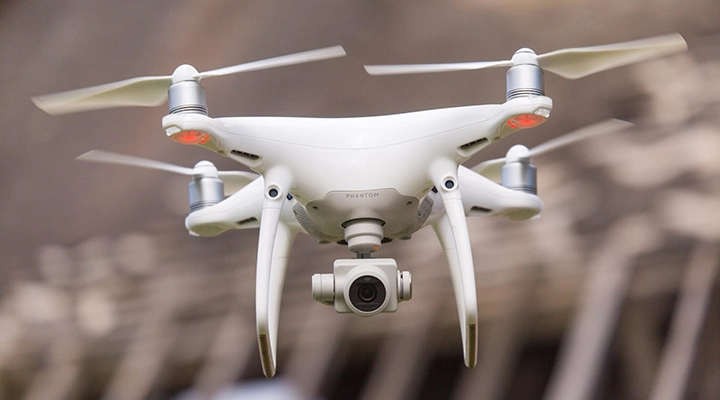
At the time of this review, the Phantom Pro remains a superb option for videographers who are happy with its excellent video quality. If you have a high enough budget and need to use this drone for business purposes, you could also go for the Pro+ version, which costs about $300 more than the basic one and provides an additional integrated tabled with the controller.
Having said that, the Pro remains a highly capable drone for both stills and video production with its 1-inch sensor, adjustable aperture, and mechanical shutter.DJI has once again raised the bar for aerial photography, and overall the Phantom Pro is one of the best drones we’ve ever reviewed. It lacks a bit in portability and is expensive, however, the image quality will blow you out of the water.



